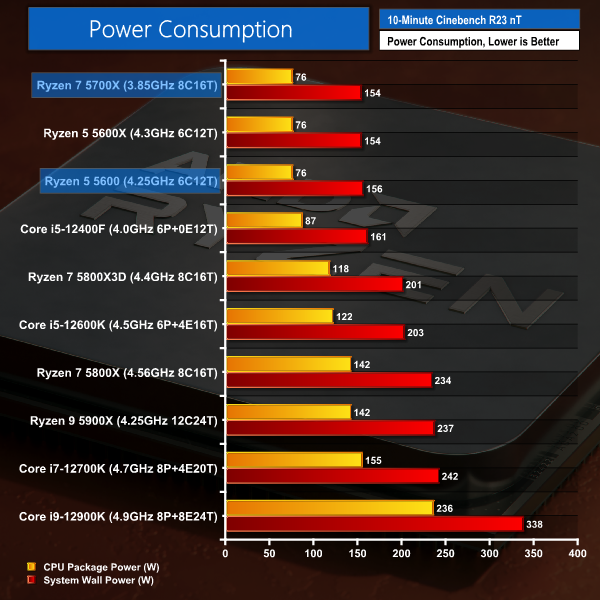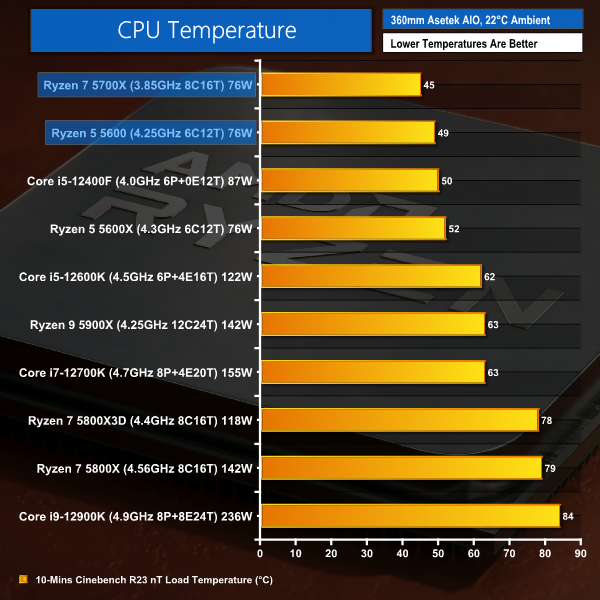For CPU load results, we read the power draw after running 10 minutes of the Cinebench R23 nT all-core rendering test. The same test parameters are used for temperature readings.
The power consumption of our entire test system (at the wall) is shown in the chart. We also include the reported CPU Package Power.
Power Consumption
Power draw readings are accurate to around +/-2-4W under heavy load due to instantaneous fluctuations in the value. We use a Titanium-rated Seasonic 1000W Prime PSU.
Modest power draw is exactly what we expect from AMD’s Zen 3 architecture. The Ryzen 5 5600 and Ryzen 7 5700X sip power thanks to their 65W TDPs limiting them to 76W of package power. In fact, system-wide power draw for these chips is about the same as the CPU-only power usage for a Core i7-12700K!.
Looking at the Ryzen 7 5800X, we see that an extra 66W of package power is required to deliver just over 700MHz uptick in clock speed. Zen 3 really is very energy efficient when clock speed is held back.
The Core i5-12400F also does pretty well in terms of power usage, particularly given its performance competitiveness versus the Ryzen 5 5600. But the notably quicker Core i5-12600K does require a greater amount of energy to deliver its higher performance versus the Ryzen 7 5700X.
Temperatures
Temperature recordings were taken using 360mm Asetek AIO CPU cooler. Ambient temperatures were around 22°C.
Given the modest power consumptions, it comes as no surprise to see the new Ryzen chips running at very tolerable temperature levels. These two new chips – and the other Ryzen 5 and Intel Core i5-12400F by extension – don’t need a cooler as proficient or expensive as our 360mm AIO.
The Core i5-12600K is a little hotter and juicier versus its Ryzen 7 5700X price competitor though. Then again, the Ryzen 7 5800X shows us what a hot running Ryzen chip looks like!
 KitGuru KitGuru.net – Tech News | Hardware News | Hardware Reviews | IOS | Mobile | Gaming | Graphics Cards
KitGuru KitGuru.net – Tech News | Hardware News | Hardware Reviews | IOS | Mobile | Gaming | Graphics Cards




